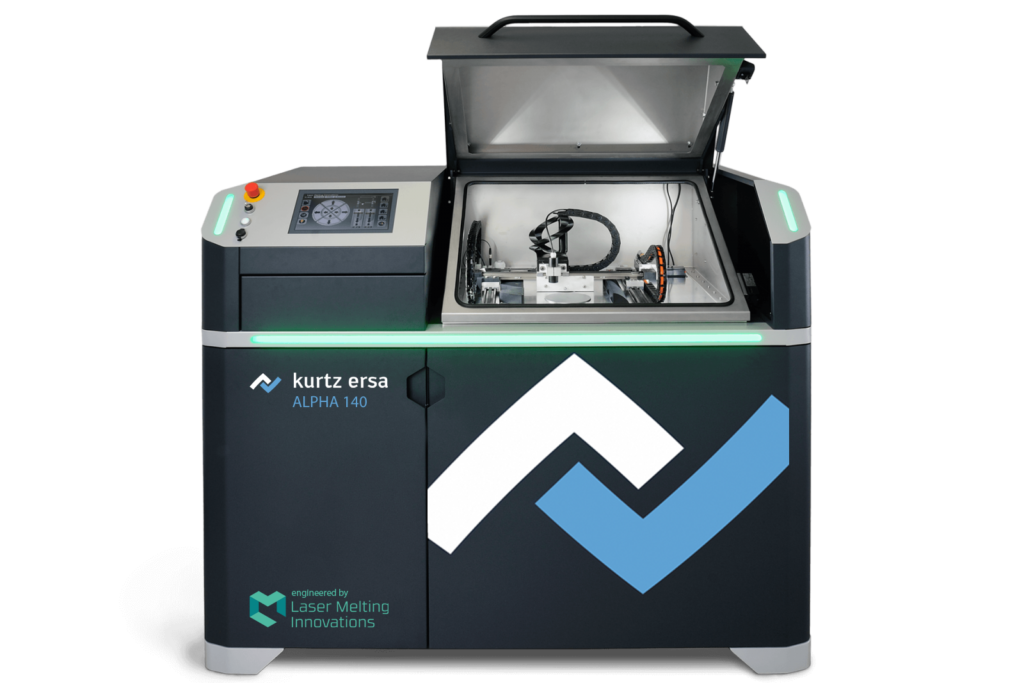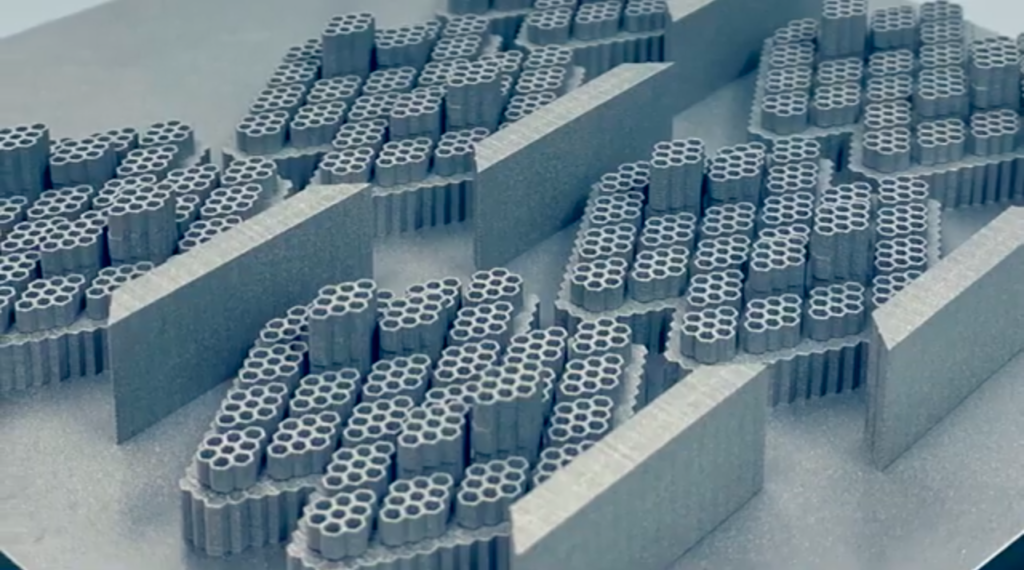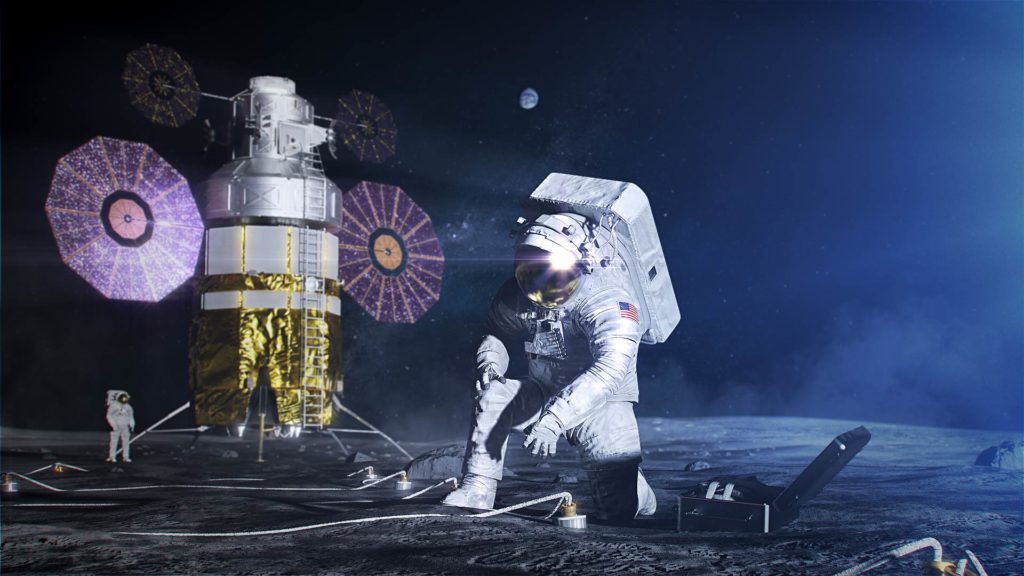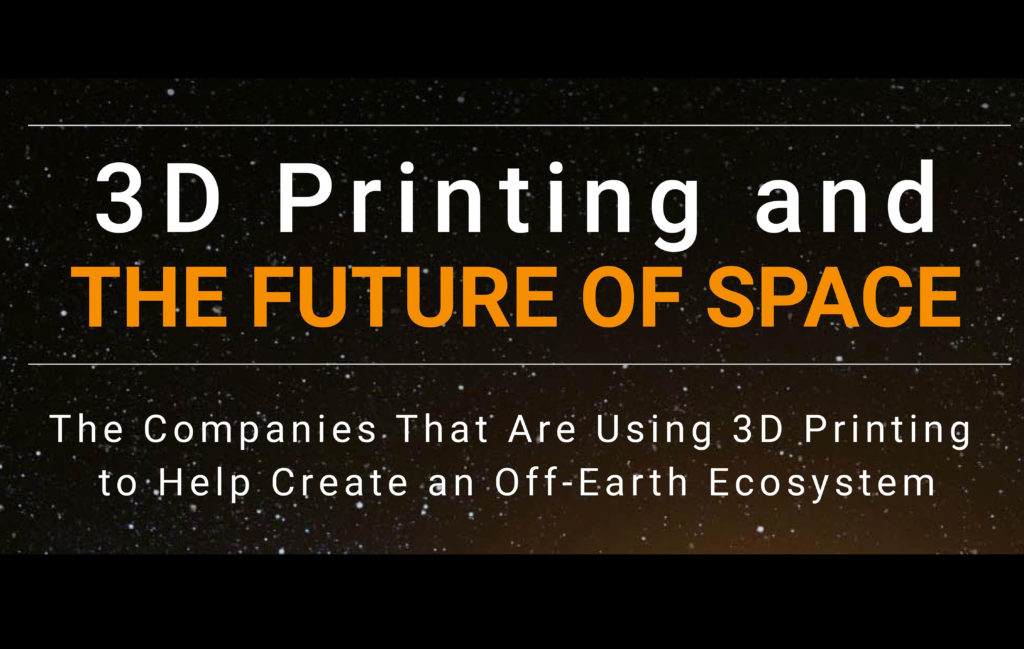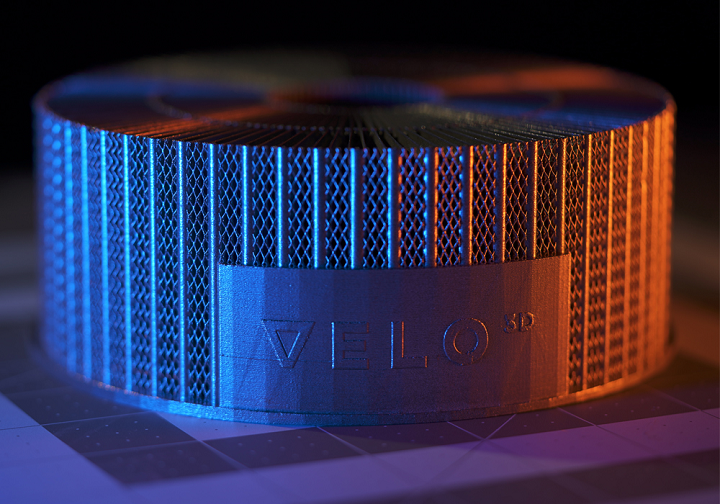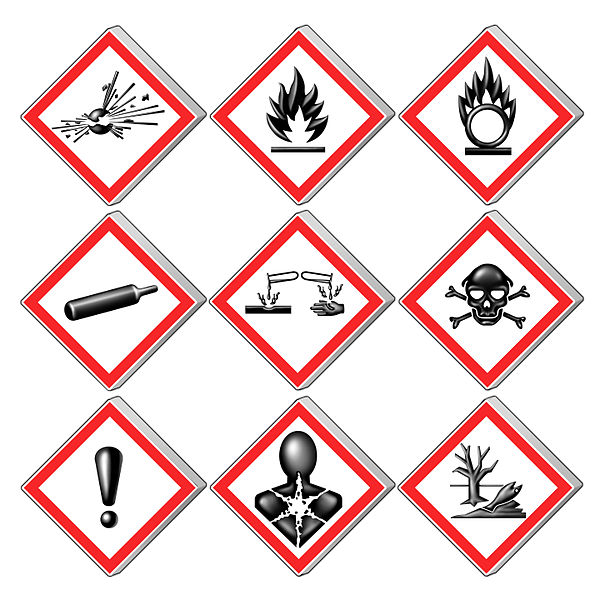We finally made it to 2022! I feel like I said the same thing about 2021, but oh well. If you’ve been following along with us over the past week, you’ll notice that we’ve been publishing several stories with 3D printing predictions for the coming year, including for bioprinting, 3D software, large-format 3D printing, and more. But today, we’re going to take a look back at what happened in 2021 with a roundup of last year’s ten most popular stories on 3DPrint.com. These pieces cover a range of topics, from metal and space 3D printing to 3D printed meat alternatives, face masks, and more.
#10: Push Button Metal: Players in Low-Cost PBF Metal 3D Printing
#10 is this story about the industry players in low-cost powder bed fusion (PBF) metal AM, part of a series on the evolution of push button metal 3D printing. This piece talks about some of the companies working to develop more accessible metal 3D printers that can be used easily in semi-factory environments, and a non-exhaustive list of some of the participants, including German firm One Click Metal, a startup within Trumpf; German Fraunhofer ILT spinout Laser Melting Innovations; Meltio, which offers a low-cost system for both wire and powder metal; Italian firm Sharebot, which makes a wide variety of of 3D printer types; and Pennsylvania-based Xact Metal, which offers three PBF 3D printers that are low-cost thanks to a gantry-based laser system.
There are several other low-cost metal PBF market players mentioned in this story, including Coherent, which was acquired by Lumentum and developed the metal PBF CREATOR 3D printer, and Additec, which offers a small directed energy deposition system that prints using wire feedstock. Finally, there’s Freemelt, a Swedish company with an open-source electron beam melting (EBM) system, and US-based Open Additive, which has its open source-source system, but for laser PBF.
#9: Seurat Aims to Disrupt Metal 3D Printing with 2 Million Points of Light
Our 9th most popular story of 2021 is about 3D printing company Seurat, which wants to work pixel by pixel with its Area Printing technology, using what it calls Optically Addressed Light Valves, or OLAVs. Named after Seurat the pointillist painter, Seurat the company simultaneously illuminates and heats every pixel of a layer for faster results, instead of tracing a laser over the whole build. So each pixel has its own laser spot, and by decreasing the laser’s scan time, builds can be processed much faster. As Joris Peels, our Executive Editor and this story’s author, put it, “Seurat’s approach is a fundamental challenge to the existences of existing powder bed fusion (PBF) companies.”
“Their promises will also fundamentally change our industry if they can be realized,” Peels continued. “The company points to ‘precise laser energy control in time and space provides complete quality control’ and ‘by melting cleanly, typical part size limits will be overcome.’ At the same time, Seurat asserts that ‘accuracy and surface finish combine to enable true net-shape processing.’ The company hopes to achieve a lot of significant sea change-type performance enhancements for the technology simultaneously. If they do it, we will be a lot closer to 3D printing cost-effective parts for industry and a lot of other companies will be dead in the water. That is a big ‘if,’ though.”
#8: Reviewing the Anycubic Photon Mono X 3D Printer: Bigger, Stronger, Faster!
As author Anthony Schilling said in his review of the Anycubic Photon Mono X, “the golden age of resin printing is finally upon us!” Already a fan of Anycubic’s systems, Schilling found a good deal on the Photon Mono X and reviewed the newest addition to his 3D printer collection. Attractive and easy to set up, with a 192 x 120 x 245 mm build volume, semi-automatic leveling, 50 micron XY resolution, and more, the large-volume resin printer features multiple improvements over the original Anycubic Photon. According to Schilling, the printer’s monochrome LCD screen was a “welcome upgrade,” as it allows for faster curing times and uses less energy, and it’s also a quieter system, but lacks the moveable door of the original Photon and has a flatter slope at the top of the build plate, which leads to more resin building up on the print bed. There were some problems with the printer, including the lack of high-quality protection for the LCD screen, which means that if the FEP suffers punctures that cause a resin leak, some “serious issues” can occur. In addition, many people, Schiller included, received a warped build plate, which can lead to failed prints, and he also had some trouble getting the printer settings right.
“Overall, the Mono X prints really well, which is what I’ve come to expect from Anycubic. It’s also much faster. Now that I’ve replaced my warped build plate and gotten my settings mostly dialed in, I would give this printer a 9/10. It’s easy to use and a solid option for anyone looking to get into resin printing or interested in printing much bigger models,” Schiller concluded.
#7: NASA Funds 36 Space 3D Printing Projects—Here Are the 15 Most Exciting
Our 7th most popular story from 2021 is about 15 of the most exciting outer space 3D printing projects that received funding from NASA‘s Small Business Innovation Research (SBIR) and Small Business Technology Transfer (STTR) program last year. The first was a system from researchers at Physical Sciences and MIT that could print structures of molten lunar regolith (moon dust) with the ability to support human activities on the Moon’s surface, while the second was space technology startup CisLunar Industries and its idea for building metal foundries in space. Blueshift is developing a system to extract oxygen and water from lunar regolith, and Nanovox received two SBIR grants: one for multi-material 3D printing of platform-integrated wireless communication avionics and sensors, and the second for using AM to reduce cost and schedule for CubeSat optical systems. Also, reusable launch vehicle startup Masten Space Systems and the Pacific International Space Center for Exploration Systems (PISCES) are collaborating on low-energy additive construction for the Moon and Mars.
Ohio-based 3Dnol proposed a way to improve propulsion system efficiency by 3D printing shape memory alloys (SMAs), and researchers at the University of Texas at Dallas are working with Faraday Technology to print nanocarbon-infused metals in Low Earth Orbit (LEO) using an electro-co-deposition approach. RC Integrated Systems received funding for its proposal of 3D printed sensors that can withstand temperatures up to 5,000°F and therefore support rocket propulsion systems ground tests, while TGV Rockets wants to use Ultrasonic Additive Manufacturing (UAM) to build new metal structures and repair damaged ones. Researchers at the University of Texas at San Antonio and Astroport Space Technologies are working on in-situ 3D printing bricks made of lunar regolith, Applied Optimization wants to develop a Wire-Feed AM (WAM) process control solution to correct defects, which has applications in NASA’s production of low-cost liquid rocket engines and large rockets, and Mainstream Engineering Corporation is working with Virginia Tech to use AM for in-situ fabrication of spacecraft thermal protection systems (TPS). Finally, RE3D and the University of Tennessee in Knoxville (UTK) received funding to develop high-temperature, 3D printable hybrid thermoset materials that can withstand harsh orbital environments, Open Additive and the University of Pittsburgh are developing simulation software—combined with in-situ sensing capability—to be used with laser powder bed fusion (LPBF) printing, and Advanced Scientific Concepts is working on using its real-time 3D imaging technology for fast traveling rovers.
#6: Novameat 3D Prints “World’s Biggest” Cell-Based Meat Prototype

Novameat released the “world’s biggest” piece of cell-based whole cut analogue meat. Image courtesy of Novameat
We heard a lot about 3D printed meat alternatives this year, including this cell-based whole-cut meat analog that Novameat claims is the biggest in the world. The Barcelona startup has been 3D printing plant-based meat substitutes since it was founded in 2018, and revealed its giant meat alternative prototype not long after receiving €250,000 through the Spanish government to integrate its microextrusion AM technology into higher-output industrial printing systems. Novameat works hard to mimic the taste, texture, appearance, and nutritional properties of animal meat products, and uses 3% vegetable fat, 72% water, and 25% plant protein sources to print what writer Vanesa Listek called “a meat fiber matrix that looks and tastes like the real thing.”
“Led by Novameat’s Junior Research Scientist and biotechnologist Esther Plans Cortinas, the complex project is part of the startup’s goal to create “clean meat.” The development could help reduce agricultural greenhouse gas emissions, the use of land and water, overcoming the challenges of today’s unsustainable and inefficient animal agriculture industry by creating a healthy, efficient, humane, and sustainable food supply system,” Listek wrote.
#5: 3D Printing and the Future of Space
Our 5th most popular 3D printing story from 2021 takes us back to outer space with Listek, who looked at 50 space companies actively using 3D printing to develop an off-Earth ecosystem; you can see the full list by visiting our Space Zone. For example, Axiom Space, which developed the first privately-owned commercial space station, plans to 3D print parts in orbit, while Dawn Aerospace has begun 3D printing combustion chambers for high-performance and high combustion pressure rocket engines. Airbus has 3D printed at least 500 radio frequency (RF) components, French company Anywaves 3D prints high-performance ceramic antennas for the satellite constellations market, and Thales Alenia Space has successfully orbited communications satellites fitted with 3D printed parts. Intuitive Machines provides innovative solutions for the commercial space ecosystem, nScrypt and Techshot created the BioFabrication Facility (BFF) to print organ-like tissues in microgravity aboard the ISS, Tethers Unlimited is working to reprocess space trash and debris to make resources and feedstock for in-space manufacturing, and Oceaneering Space Systems (OSS) is creating the robotic arm to be integrated with Made In Space’s novel 3D printing system for Archinaut. Boeing will make SLS core stages and Exploration Upper Stages (EUS) to support several Artemis missions (and 3D printed molds for foams used to protect cramped areas and small hardware), applied sciences company Dynetics is developing a lunar landing system for Artemis, and multinational company Jacobs is focusing on new and innovative ways to create building materials from Martian and lunar regolith through autonomous additive construction systems. These are just a few examples of how 3D printing is being used to ensure the future of space exploration.
“From manufacturing rocket engines to launch vehicle parts, 3D printing disrupts yet another industry by offering design freedom, reducing weight, and lowering costs,” Listek wrote. “The journey into space commercialization has already begun, and AM is becoming a big part of it.”
#4: WASP’s Dual House 3D Printers Build Innovative Eco-Habitat in Italy
Our 4th most popular story last year focuses on 3D printed construction, specifically Italian 3D printer manufacturer WASP (World’s Advanced Saving Project) and its sustainable living project TECLA, a 3D printed circular housing model made out of reusable and recyclable materials using its flagship modular collaborative Crane WASP system. Built in northern Italy’s Massa Lombarda region, the 3D printed TECLA model was designed by Mario Cucinella Architects (MCA), based on in-depth research out of Mario Cucinella’s School of Sustainability. This project was more challenging than the company’s low-cost, sustainable 3D printed GAIA house, which was printed out of organic waste from rice production on the Crane WASP, because, as Listek explained, “TECLA can become the basis for brand new autonomous eco-cities off the current grid.”
“Unlike traditional housing models, the result is a highly flexible structure designed to be energy-efficient and resilient to any climate,” she continued. “Entirely 3D printed using locally sourced clay, with a double dome and potter wasp-inspired construction (reminiscent of the insect’s little clay homes), the high-performance house is a model of a circular economy.”
#3: With $1.6B Valuation, VELO3D is Sixth 3D Printing Firm with Plans to Go Public in 2021
In May, VELO3D became the sixth 3D printing company in 2021 to announce that it was going public, following Markforged, Rocket Lab, Rokit Healthcare, Massivit3D, and MeaTech. The metal 3D printing company went the SPAC route by partnering with special purpose acquisition company (SPAC) Jaws Spitfire Acquisition Corporation with a $1.6 billion valuation. The combined company now operates as VELO3D and is listed on the New York Stock Exchange (NYSE) under the ticker symbol VLD. This transaction has given the company access to more resources with which to invest in its engineering, sales, marketing, product development, and customer support, increasing the competitive advantage of its proprietary full-stack metal 3D printing solution.
“Through the deal, VELO3D will receive up to $345 million in proceeds from JAWS Spitfire’s cash in trust and a $155 million private placement of common stock at a $10.00 per share value. Upon completing the transaction, it is set to benefit from a flexible capital structure with approximately $470 million of cash on its balance sheet, net of debt, and assuming no redemptions are effected,” Listek wrote at the time of publication. “The upcoming initial public offering (IPO) will help the company expand into new markets, invest in new technology, and become positioned to rapidly scale to meet customer demand.”
#2: How Safe Are 3D Printing Resins?
3DPrint.com’s second most popular story last year was this one about the safety of 3D printing resins. These systems use photosensitive liquids, which *can* have more potential health risks than your typical filaments, including air contamination from volatile organic compounds (VOCs) and other small particles, and the fact that prolonged exposure can cause users to develop a mild allergic reaction, as many resins are sensitizers. But, companies that make resins have to meet government standards, and may even have to comply with additional regulations like ISO 9001, which helps ensure that their chemicals are only minimally harmful. To keep yourself safe, make sure to work in a well-ventilated area and wear protective goggles and nitrile or latex gloves. Read the manufacturer’s material safety data sheet (MSDS) ahead of time, and most importantly, avoid direct contact with liquid resin.
“Several authorities have conducted studies on 3D resin printing safety. These have all found that long-term emissions from printing are mostly negligible, although if you don’t follow the proper precaution, there are risks. Since studies have found traces of hazardous materials in resin printing environments, you should follow safety guidelines,” author Jane Marsh wrote.
“3D printing resins may not be as dangerous as they first seem, but you should still take precautions with them.”
#1: Be Someone Else with Hyper-Realistic 3D Printed Faces from Japan
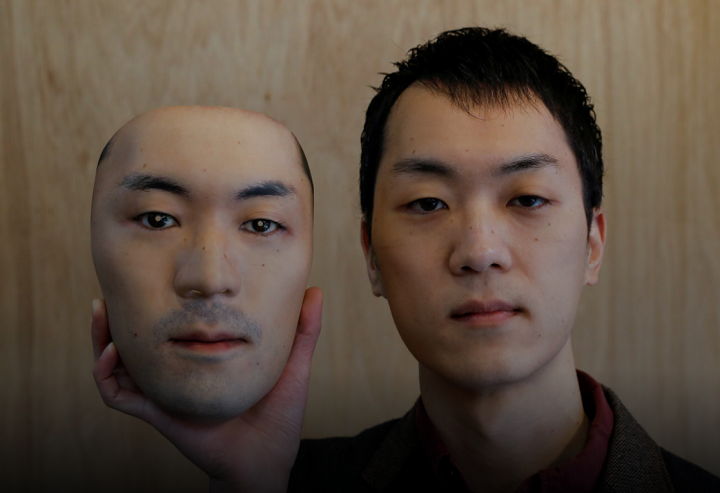
Shuhei Okawara, 30, owner of mask shop Kamenya Omote, holds a super-realistic face mask based on his own face, made by using 3D printing technology, in Tokyo
Finally, our most popular story in 2021 was this fun piece about some extremely realistic 3D printed face masks made by Japanese designer and retailer Shuhei Okawara, who owns a mask and theatrical accessories shop in Tokyo called Kamenya Omote. In an attempt to add some interesting merchandise to his already unique offering, Okawara recruited 100 anonymous Japanese adults for this project in late 2020, giving them each 40,000 yen (about $386) for pictures of their faces. Then, an artisan reworked the pictures into the realistic replica faces, which were 3D printed in the form of masks that are meant to be for fun, or displayed as pieces of art, and not to protect you from COVID-19.
Okawara’s super-realistic 3D printed face masks went on sale earlier this year for 98,000 yen per mask (about $950). He hoped to expand his range of 3D printed face masks, even including some non-Japanese faces, but from the looks of his shop’s Instagram account, he doesn’t have these available yet.
Happy New Year from all of us at 3DPrint.com, and as always, happy 3D printing!
Subscribe to Our Email Newsletter
Stay up-to-date on all the latest news from the 3D printing industry and receive information and offers from third party vendors.
You May Also Like
Precision at the Microscale: UK Researchers Advance Medical Devices with BMF’s 3D Printing Tech
University of Nottingham researchers are using Boston Micro Fabrication‘s (BMF) 3D printing technology to develop medical devices that improve compatibility with human tissue. Funded by a UK grant, this project...
3D Printing Webinar and Event Roundup: April 21, 2024
It’s another busy week of webinars and events, starting with Hannover Messe in Germany and continuing with Metalcasting Congress, Chinaplas, TechBlick’s Innovation Festival, and more. Stratasys continues its advanced training...
3D Printing Webinar and Event Roundup: March 17, 2024
It’s another busy week of webinars and events, including SALMED 2024 and AM Forum in Berlin. Stratasys continues its in-person training and is offering two webinars, ASTM is holding a...
3D Printed Micro Antenna is 15% Smaller and 6X Lighter
Horizon Microtechnologies has achieved success in creating a high-frequency D-Band horn antenna through micro 3D printing. However, this achievement did not rely solely on 3D printing; it involved a combination...


